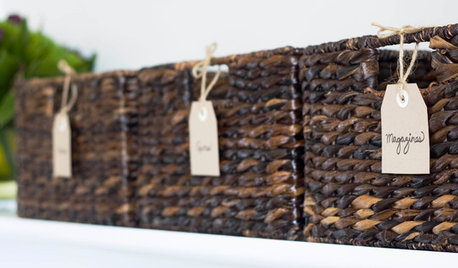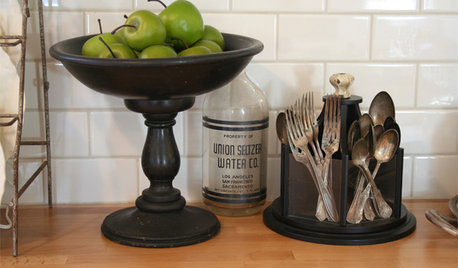Organic options for Brown Rot?
franktank232
10 years ago
Related Stories

GARDENING AND LANDSCAPING8 Rot-Resistant Woods for Your Outdoor Projects
No need for chemical treatments on your deck or pergola. These woods stand up to weather, insects and time beautifully on their own
Full Story
KITCHEN COUNTERTOPSKitchen Counters: Concrete, the Nearly Indestructible Option
Infinitely customizable and with an amazingly long life span, concrete countertops are an excellent option for any kitchen
Full Story
BLACKHow to Decorate With Brown, Black — or Both
Black is best for engineered materials; brown works great for textures — and more designer tips for working with these two classic colors
Full Story
HOUZZ TOURSHouzz TV: See How Reclaimed Wood Warms a Home With a James Brown Wall
L.A. homeowners craft their interiors with salvaged wood and build a tribute to the Godfather of Soul with cassette tapes
Full Story
STORAGE15 Fun Organizing Ideas for Fashionistas
Give your clothes, shoes and accessories the home they deserve with these strategies for posh storage and display
Full Story
GARDENING GUIDESHow to Switch to an Organic Landscape Plan
Ditch the chemicals for a naturally beautiful lawn and garden, using living fertilizers and other nontoxic treatments
Full Story
ORGANIZINGGet Organized: Are You a Piler or a Filer?
Tote out the bins and baskets and learn how to be an organized piler if file cabinets leave you cringing
Full Story
ORGANIZINGProfessional Tips for Organizing Your Clothes Closet
As summer draws to a close, get expert advice on editing and organizing your wardrobe
Full Story
KITCHEN DESIGNGet Organized: Rethink the Silverware Drawer
Keep your knives and forks clean and organized with two easy storage ideas
Full Story
ORGANIZING7-Day Plan: Get a Spotless, Beautifully Organized Home Office
Start your workday with a smile in a home office that’s neat, clean and special to you
Full Story






Scott F Smith
franktank232Original Author
Related Professionals
Edmond Landscape Architects & Landscape Designers · Maple Valley Landscape Architects & Landscape Designers · Birmingham Landscape Architects & Landscape Designers · Brooklyn Center Landscape Architects & Landscape Designers · Bethlehem Landscape Contractors · Biloxi Landscape Contractors · Burlington Landscape Contractors · Cudahy Landscape Contractors · El Segundo Landscape Contractors · La Verne Landscape Contractors · La Vista Landscape Contractors · Los Banos Landscape Contractors · Lynchburg Landscape Contractors · Pahrump Landscape Contractors · Rockville Landscape Contractorspersianmd2orchard
franktank232Original Author
Scott F Smith
mrsg47
alan haigh
persianmd2orchard
letsski
Scott F Smith
alan haigh
bberry_gw
persianmd2orchard
rayrose
Scott F Smith
alan haigh
gator_rider2
Scott F Smith
rayrose
alan haigh
rayrose
gator_rider2
alan haigh
franktank232Original Author
alan haigh
Scott F Smith
windfall_rob
franktank232Original Author
franktank232Original Author
franktank232Original Author
steve333_gw
franktank232Original Author
Scott F Smith
windfall_rob
franktank232Original Author